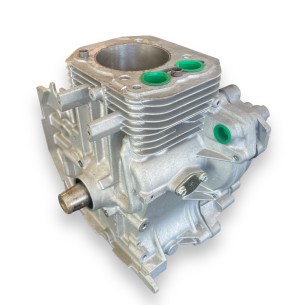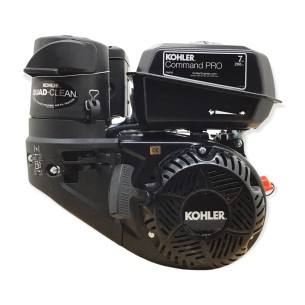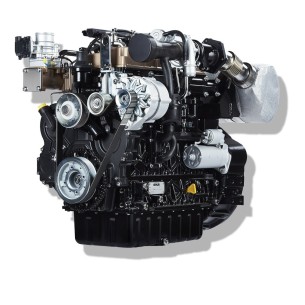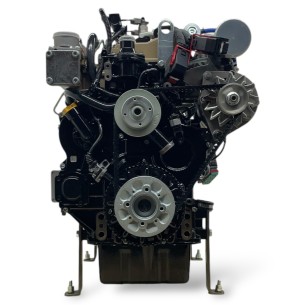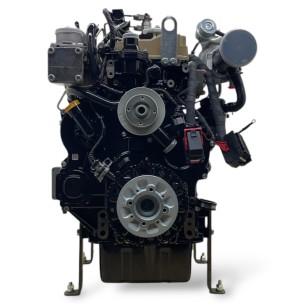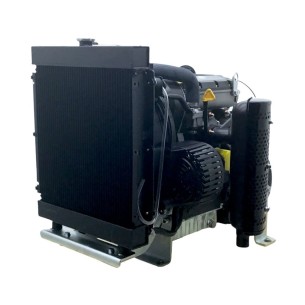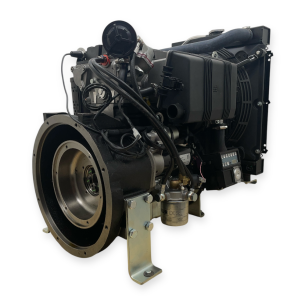- News
- 34772 views
Kohler is a company known worldwide for manufacturing and distributing high quality diesel and gasoline engines for various applications, such as industry, construction or garden.
But how did Kohler come about? How have they become the great multinational that they are today?; How has the evolution of your engines been? Today we tell you, this is the history of Kohler engines .

The beginnings of the Kohler company
The origins of Kohler engines date back to 1920 , when a Kohler brand 1,500 Watt automatic power and lighting generator was launched on the market. This generator was designed to serve rural markets, providing electricity with a Kohler gasoline engine as a power source.
It was not until 1939 that the development of liquid-cooled diesel engines began. There were many models that were planned:
- 1200 rpm constant speed motors for Kohler generators.
- Engines with powers between 5 hp (single cylinder) and 20 hp (four cylinders).
- Variable speed motors up to 2400 rpm, from 10 to 60hp.
- High speed diesel engines from 5 to 20 hp for the US Army.

The first autonomous Kohler engines arrive
In 1948 the company went a step further by opening a small engine factory. It was then that the first “self-contained” Kohler engines for industrial applications were introduced to the market. Three years later, production of the cast-iron-bodied, air-cooled, single-cylinder K90 engine began, and in 1952 the K160 emerged. Throughout the 1950s Kohler continued to add more models to the K series of engines.
But the rhythm did not stop and in 1966 the company brought to market the engine of the millionth assembly line. Production of two-stroke engines for the snowmobile industry began in 1968, and eight years later, in 1976, Kohler sold its millionth international engine.

Kohler becomes a benchmark in the industry
It is in the year 1995 when Kohler positioned itself as an innovative and benchmark brand in the industry by introducing overhead camshaft engines.
The recognition continued until, in 1998, Kohler was awarded an award by the National Society of Professional Engineers for the 18hp overhead valve engine. The award praised the said engine as the best new product among the thousands of items that were introduced by all the major manufacturing companies.
New releases didn't stop and in 1999 Kohler introduced the Command PRO series of premium quality engines specifically targeted at lawn tractors. In the same year, the first liquid-cooled Kohler Aegis engine was also launched on the market.

The 2000s, golden years for Kohler
During the early years of the 2000s , Kohler launched numerous innovative and leading-edge products on the market:
- In 2002 Courage engines entered the market with new features including an inverted crankcase for leak-free operation.
- In September 2004 Kohler announced the introduction of higher powered engines, up to 31 horsepower, available in its Aegis series of liquid-cooled engines.
- In 2005 Kohler revealed a powerful 34-38 HP Command PRO gasoline engine.
- In 2007 the first engine for lawn mowers was launched on the market, with the XT series engines.

Kohler and Lombardini become one
In 2007, one of the most important events in the company's history occurred: Kohler bought the Lombardini company . This acquisition allowed the two brands to meet the needs of customers and consumers around the world, both with gasoline and diesel engines.
Already in 2008, the Kohler Engines product offer was expanded to include gasoline and diesel engines and on October 25, 2011, Lombardini presented the new range of KDI engines at its Reggio factory, a historic milestone in the history of Lombardini/Kohler. With this event we conclude the review of the history of the great company Kohler Engines.



At Comercial Méndez we are official distributors of Kohler and Lombardini engines and spare parts, brands where experience and quality of materials prevail above all else.
If you are looking for an engine or want to buy Kohler spare parts, do not hesitate to contact us . Our team will be happy to help you. Talk later?

